Note: It is an ancient liturgical tradition to celebrate on the day before Palm Sunday our Lord’s raising of Lazarus from the dead. My parish celebrates this liturgy as a “votive mass,” or Mass for particular occasion and intention. The propers for the Mass (Collect, Readings) derive from standard liturgy of the Orthodox Church, which has long celebrated this day.
We hear in this carefully crafted Gospel account from S. John how Jesus Christ, six days before His own death, and with particular awareness of the people “standing by, that they may believe that Thou didst send me,” went to His dead friend Lazarus at Bethany outside of Jerusalem, on the Mount of Olives. He was aware of the approaching death of Lazarus but deliberately delayed His coming, saying to His disciples at the news of His friend’s death: “For your sake I am glad that I was not there, so that you may believe.” Everything Christ does is for us, for our belief.
When Jesus arrived at Bethany, Lazarus was already dead for four days. This fact is emphasized by the Gospel narrative. The four days underscores the horrible reality of death. Man, created by God in His own image and likeness, is a spiritual-material being, a unity of soul and body. Death is destruction; it is the separation of soul and body. The soul without the body is a ghost, as one theologian puts it, and the body without the soul is a decaying corpse. A great voice of the Church, Saint John of Damascus, wrote: “I weep and I wail, when I think upon death, and behold our beauty, fashioned after the image of God, lying in the tomb dishonored, disfigured, bereft of form.” The mystery of death is quite real, quite difficult, and quite awful. Death is always a tragedy.
With dramatic simplicity the Gospel records that, on coming to the scene of the horrible end of His friend, “Jesus wept.” At this moment Lazarus, the friend of Christ, stands for all men, and Bethany on the Mount of Olives is the mystical center of the world. Jesus wept as He saw the “very good” creation and its king, man, who was made through Him, to be filled with joy, life and light, now a burial ground in which man is sealed up in a tomb outside the city, removed from the fullness of life for which he was created, and decomposing in darkness, despair and death. Again as the Gospel says, the people were hesitant to open the tomb, for “by this time there will be an odor, for he has been dead four days.”
When the stone was removed from the tomb, Jesus prayed to His Father and then cried with a loud voice: “Lazarus, come out.” The sacred imagery of the feast shows the particular moment when Lazarus appears at the entrance to the tomb. He is still wrapped in his grave clothes and his friends, who are holding their noses because of the stench of his decaying body, must unwrap him. In everything stress is laid on the audible, the visible, and the tangible. Christ presents the world with this observable fact: on the eve of His own suffering and death He raises a man dead four days! The people were astonished. Many immediately believed on Jesus and a great crowd began to assemble around Him as the news of the raising of Lazarus spread. The regal entry into Jerusalem followed. This was the miracle of miracles.
Let us understand and contemplate how Jesus through His voice created all things in heaven and earth, beginning with the light and ending with the creation of animals and human beings. And that Jesus through His voice raised Lazarus back to life. As He says, “My sheep hear My voice, and I know them, and they follow Me.” Lazarus heard Christ’s voice. This happened on the fourth day of Lazarus’s death, and the Church has found important symbolism in that it was the fourth day. Our Lord’s resurrection is on the third day. This is His resurrection to teach all of creation that He is the Lord of lords and King of kings; it is to reveal to the Church that it is because of Christ’s resurrection that our resurrection to eternal life is possible, and that it is because of Him that the power of death upon the disciples of Christ has been removed. And so Lazarus, representing all men as Adam represents all men in Genesis, is resurrected on the fourth day, one day after Our Lord’s resurrection. Because of Our Lord Jesus, we can have the assurance of our resurrection and the comfort of a reasonable and holy hope in the joyful expectation of eternal life in the heavenly kingdom.
Jesus Christ is the same yesterday, and today and for ever. What He has done, is what He will do, is what He is doing. To be a follower of Christ is always to be invited into the most holy ground of His being. We enter into Holy Week with the benefit of knowing how this divine narrative unfolds. This knowledge is grace, and by this grace we can engage the way of the Cross ever more intimately, ever more closely, ever more attentively, with the such knowledge of Our Savior’s sacrifice for us and for our salvation that demands our love for Him, demands our commitment to Him, and demands our adoration of Him and His power. With S. Martha, let us say, “Yes Lord: I believe that you are the Christ, the Son of God, Who is coming into the world.” This Christ, Who died for us and for our sins, and for our salvation, Who with the Father and the Holy Ghost, lives and reigns, ever one God, unto the ages of ages. Amen.

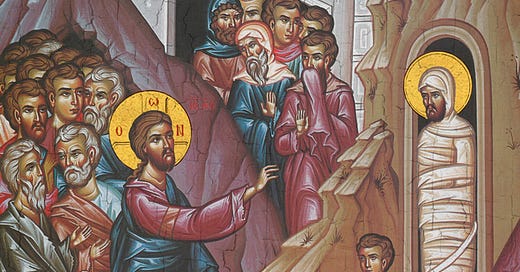




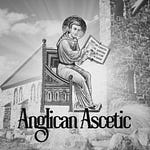
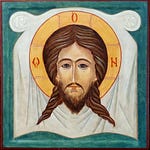
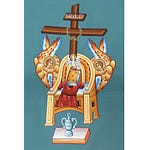

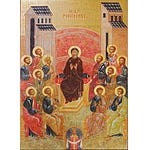
Share this post